In Focus: How Spode went from local ceramics manufacturer to global fame and household name
This year, Spode celebrates its 250th anniversary. Matthew Dennison tells the story of how this English ceramics manufacturer, still based in the Potteries.
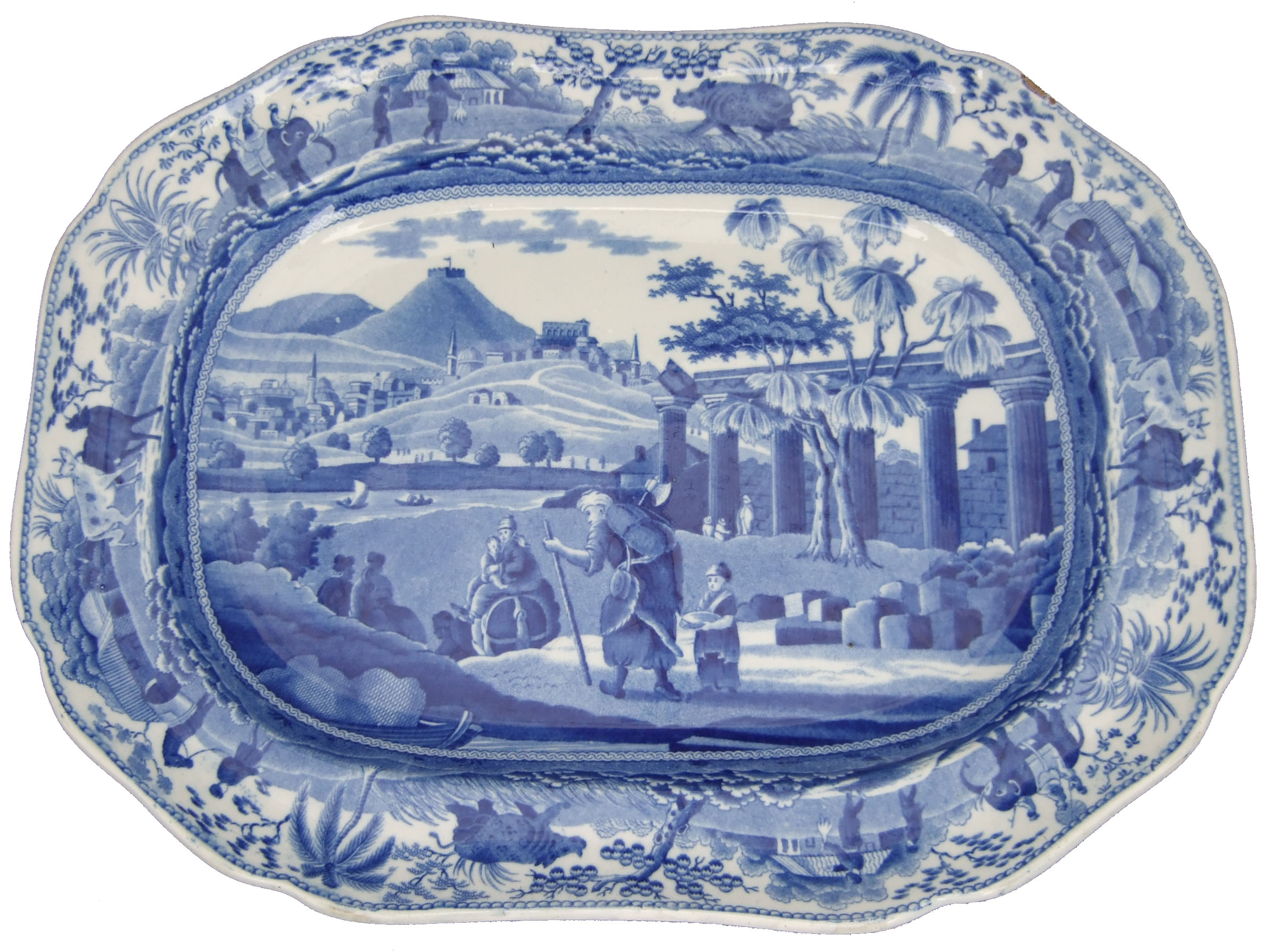
Notice the simple, well-balanced lines, the glowing colour set off by translucent white and the subtle pattern which complements the shape of each piece to give a charming unity’ trilled an article in a women’s magazine in 1960. Its subject was a tea set designed by the late Princess Margaret, made specially for her by ceramics manufacturer Spode. Over the past 250 years, Spode has frequently achieved such a harmony of pattern and shape in its output, as well as delightful juxtapositions of glowing colours and a variety of high-quality ceramic bodies.
The factory that Josiah Spode I opened in 1776, for its first three years in partnership with Thomas Mountford, rapidly achieved nationwide renown. Its reputation was based on two of the most important innovations in British ceramics history: the development of underglaze transfer-printed decoration in the mid 1780s and, in the following decade, of bone china, which Spode originally marketed as ‘Stoke China’, a mix of equal parts china clay and china stone to two parts calcined bone. Both revolutionised the production of affordable ceramics; both were brought to a pitch of perfection in the potworks overseen by Spode and his son, Josiah Spode II, and widely copied.
In A View of the Staffordshire Potteries, published in 1800, Thomas Allbut described ‘Stoke-upon-Trent’ as ‘a pleasant rural place [of]... many earthenware manufactories, some of them on an extensive scale’. Here, Spode had grown up, in straitened circumstances following his father’s death at about the time of his sixth birthday in 1739. By his own death in August 1797, Spode’s factory was among the largest of those large-scale manufactories noted by Allbut, equipped with the latest steam technology powered by a canal link diverted for the purpose.
With a mortgage of £500, Spode had purchased his premises, according to insurance documents of 1764, as a modest building containing four ovens, two large and two small, his only financial security the profits of his wife Ellen’s haberdashery business. Yet his death was reported in The Times and the London Evening Mail; both newspapers acclaimed him as ‘an eminent Manufacturer of Earthenware’.
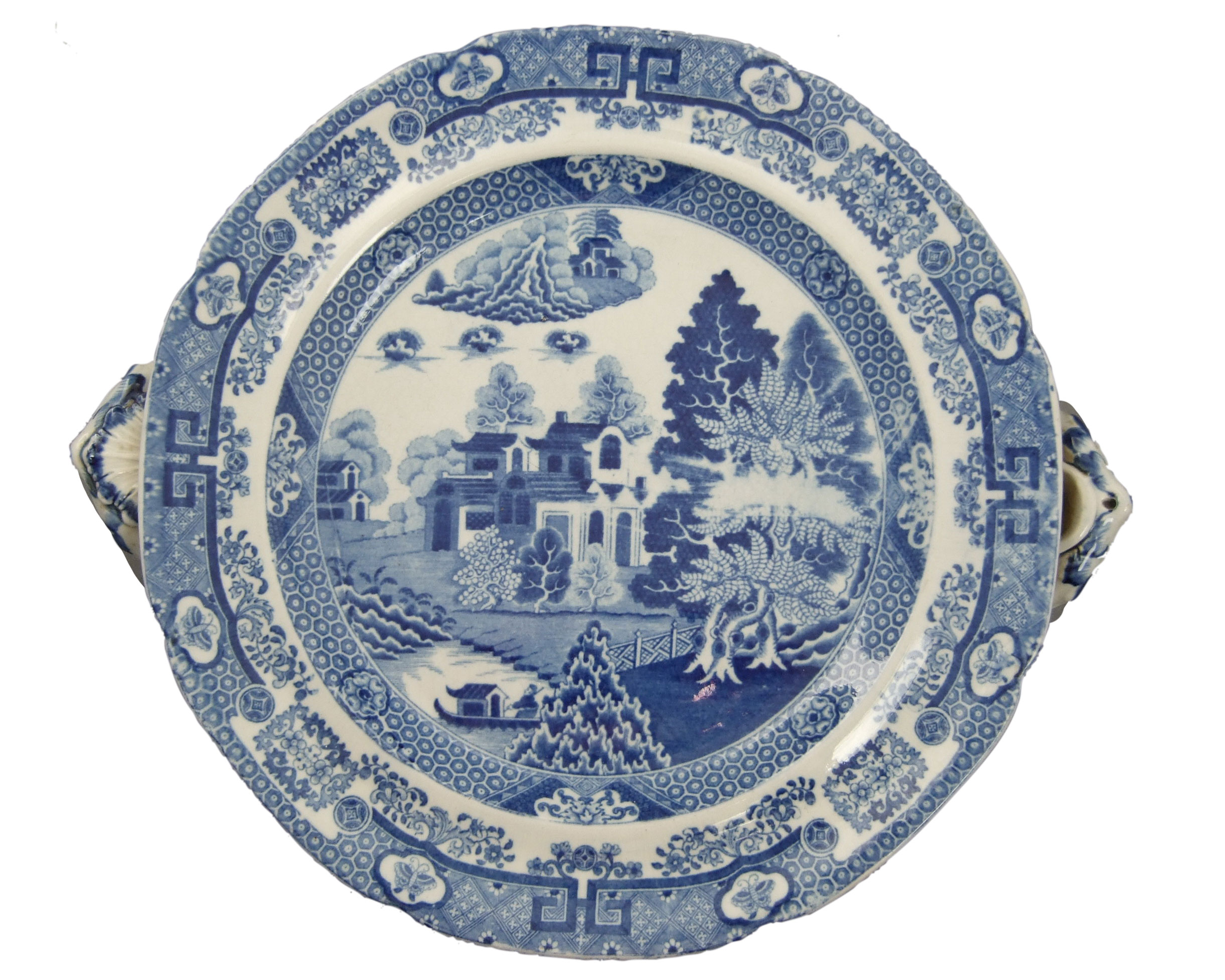
It was no more than the truth. Spode was ambitious, energetic and entrepreneurial; the company he bequeathed his son would be patronised by the Prince Regent, who commissioned services for the royal yacht and his Coronation, and by the Regent’s mother, Queen Charlotte. As a 16-year-old apprentice to leading Staffordshire potter Thomas Weildon, the young Spode had received meagre weekly wages of two shillings and threepence and a rigorous training in every aspect of ceramics manufacture. Within two years of opening a factory of his own, however, he leased a London showroom at 29, Fore Street, Cripplegate.
A London outlet was a statement of intent. It significantly expanded Spode’s fledgling client base; it provided a market for luxury items, including leg baths, rouge pots and asparagus servers; it offered insights into the changing tastes of fashionable society.
‘About 1784,’ recorded Simeon Shaw in his History of the Staffordshire Potteries of 1829, Spode ‘introduced the manufacture of Blue Printed into Stoke’; Shaw identified Spode’s ‘patterns for table services’, inspired by blue-and-white oriental porcelain, as ‘what is now called Old Willow’.
Exquisite houses, the beauty of Nature, and how to get the most from your life, straight to your inbox.
Thanks to the crisp detail and apparently endless invention of Spode’s blue-printed decoration, initially attributable to the skills of engraver Thomas Turner and a printer called James Richard — as well as Josiah’s decision to manufacture designs on earthenware in place of the costlier soft-paste porcelain produced by the Worcester factory since the 1750s — the Spode fortunes soared. Ever since, Chinese-inspired blue-and-white transfer-printed wares have formed a key aspect of the company’s output.
Spode’s commercial acumen revealed itself in the regular introduction of new patterns. Early examples, such as Mandarin of the 1780s, a typical monochrome tree-and-pagoda design, were succeeded by myriad variations, including, a decade later, Forest Landscape and the first Willow. He did not seek to set new trends, but to produce on a large scale and at accessible prices ceramics to satisfy popular tastes. The chinoiserie Buffalo pattern of the 1780s, engraved by Thomas Minton, who later founded his own rival factory, was a near copy of an original Chinese export porcelain plate; it offered middle-class customers a homegrown version of costlier East India Company imports.
A pattern produced 30 years later similarly aped fashionable tastes. The Chinese of Rank design reproduced in miniaturist’s detail an aquatint of the same title by Thomas and William Daniell, which had been first published in 1810 in A Picturesque Voyage to India by the way of China.
In this way, father and son successively outwitted the fickleness of fashion and a number of Spode blue-and-white designs copied illustrations seen in costly new publications. Popular patterns reflected the taste for an exotic East championed, for example, by the Prince Regent at the Royal Pavilion in Brighton and the preoccupation with Classical sites and architectural remains fuelled by the Grand Tour.
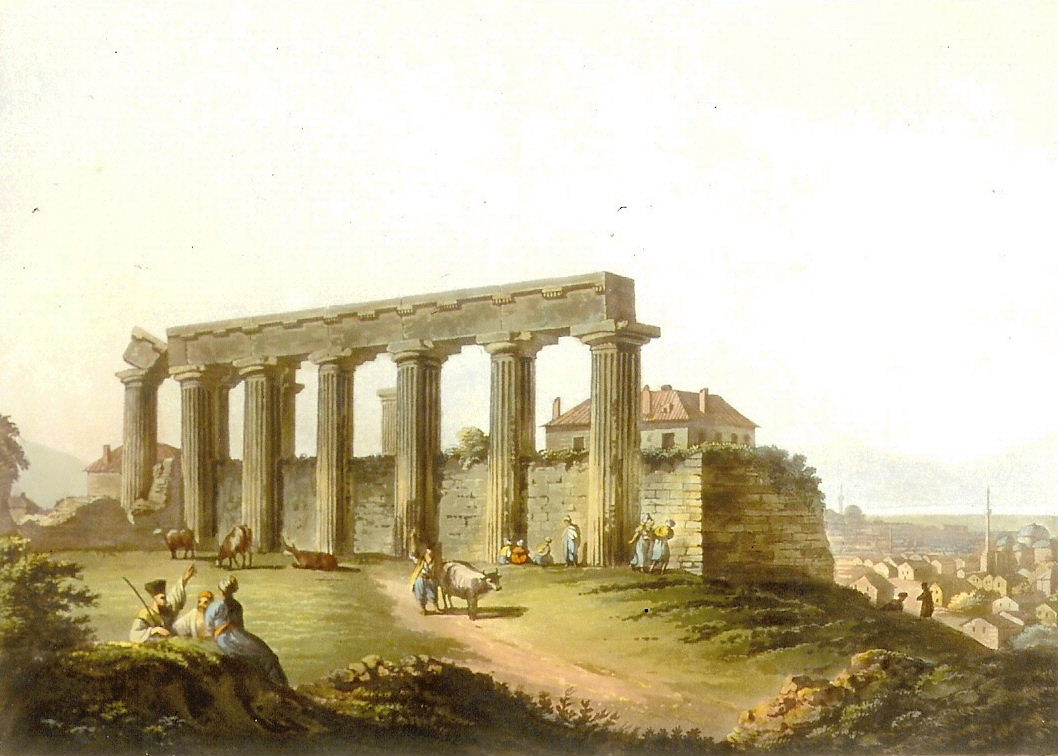
Luigi Mayer’s Views in Egypt, Palestine and the Ottoman Empire, published between 1801 and 1804, supplied scenes for Spode’s extensive ‘Caramanian’ series, which included views of Corinth, Classical ruins, sarcophagi, sepulchres and even a necropolis. The ‘Indian Sporting’ set, launched in 1809, featured images inspired by Samuel Howitt’s illustrations to Capt Thomas Williamson’s Oriental Field Sports, Wild Sports of the East. Its vignettes of wolf trapping, buffalo hunting and leopard shooting were mostly used on tablewares. A covered vegetable dish featured a robust version of a Howitt print entitled Decoy Elephants Leaving the Male Fastened to a Tree.
Spode II’s masterstroke was the introduction, in 1816, of a pattern the factory would produce continually until its closure in 2009 and makes again today, following the purchase of Spode by the Portmeirion Group in the same year. Blue Italian is a hybrid design, a Classical scene framed by an Oriental border. The landscape is probably 17th century in origin and was once attributed to a view by Claude Lorrain; the border reproduces an imari design on Japanese export porcelain of the second third of the 18th century. This serendipitous combination of visually unrelated components can reasonably claim its place in our national iconography. Between the wars, according to Spode curator Pam Woolliscroft, Blue Italian was available on more than 700 different shapes.
Yet the factory’s output was not confined to blue-and-white designs. Spode produced single-colour glazed earthenware; from 1824, it perfected two-colour underglaze printing; and both bone china and earthenware were manufactured with coloured grounds, coloured patterns and combinations of both. Spode’s bone-china glazes proved highly suitable for gilding.
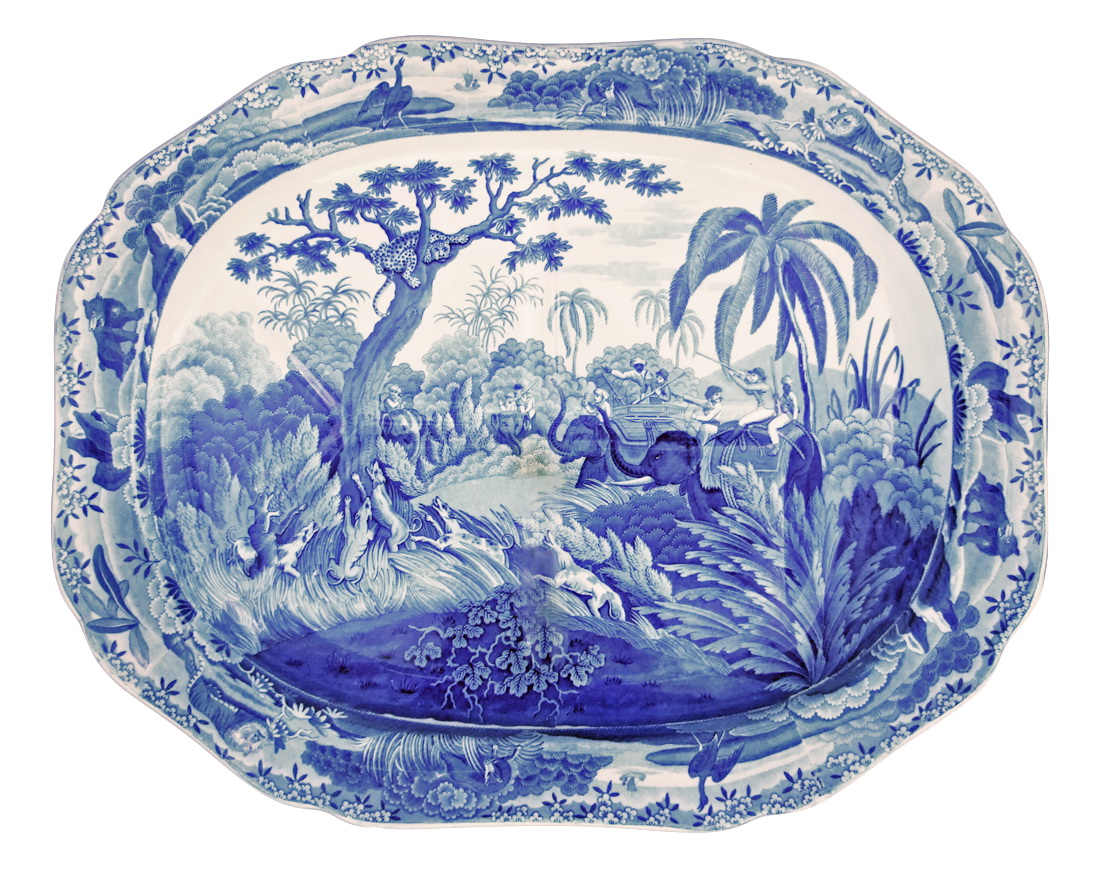
In the years of Spode II’s directorship, until his death in 1827, the factory produced some 5,000 standard patterns. Among the best were a number of sumptuous, coloured and gilded imari-inspired decorations, as well as hand-painted botanical designs that foreshadowed later Victorian tastes.
Family involvement in the factory ceased shortly after the death of Spode II, when Josiah Spode III suffered a horrific accident while inspecting new machinery. The factory was acquired by William Taylor Copeland, who had a longstanding involvement with Spode’s London shop; after he entered a partnership with Thomas Garrett, ceramics were marked Copeland & Garrett. This partnership was dissolved in 1847, when the company became W. T. Copeland & Sons, as it continued until 1970. At that point, the Spode name was revived.
Change in ownership diminished neither the quality nor ambition of the factory’s work. Copeland & Garrett excelled at lavishly gilded, frilly decorative wares in the Rococo-revival styles much in fashion; its products included door furniture (finger plates, escutcheons and door knobs) and fireplace tiles. At the Great Exhibition in 1851, Copeland’s display of unglazed white ‘statuary porcelain’, later called Parian (a term coined by Minton), excited widespread admiration; it was commended as ‘a very perfect imitation of marble’.
Two years later, Queen Victoria bought from the Dublin Exhibition a pair of large Copeland Parian figure groups modelled by William Beattie, The Golden Age and Burns and Highland Mary. For each, the Queen paid the considerable sum of £13 13s.

Far more lucrative, however, was the royal commission received in 1863: dessert and tea services for the newly married Prince and Princess of Wales, almost 200 pieces in total, triumphantly fussy designs, pierced, gilded and monogrammed, with panels or borders of flower painting by Copeland’s pre-eminent botanical artist, the German-born Charles Ferdinand Hürten. For nearly four decades, Hürten was among Copeland’s stars; he also created show-stopper pieces for the London Exhibition of 1862 and the Paris Exhibition in 1867.

Expanding markets at home and abroad and stiff competition spurred Copeland & Sons to ever greater fertility: the factory introduced an estimated 10 new patterns a week between 1833 and 1900, a staggering 35,000 in total. In the way of other 19th-century manufacturers, these included majolica wares, although Copeland’s majolica failed to rival the inventiveness, whimsy or quality of that produced by Wedgwood or Minton.
Instead, in the 20th century, the factory again excelled at transfer-printed earthenware and handpainted bone china. Several designs reflected interests of the Copeland family: drawings by sporting artist J. F. Herring in the Copelands’ collection inspired a tableware pattern called The Hunt; in 1942, flowers on the new Rhododendron pattern were based on specimens grown by managing director Ronald Copeland in his gardens in Cornwall and Staffordshire.
Enormously commercially successful, especially in the US, was Christmas Tree, a design introduced in 1938 by Harold Holdway, who eventually became Copeland’s design director. Factory legend has it that he had never seen a Christmas tree: one result of his unfamiliarity is the figure of Father Christmas in place of a fairy on top of the tree.

Among Holdway’s other designs was Queen’s Bird, which was made until 2002. An Art Deco revisiting of an old Delft design, its conception mirrored that of the earliest Spode patterns: a borrowed motif reinvented to chime with contemporary tastes. Chinese Rose, which was produced until 2007, had a similar genesis: its central motif was derived from a pattern called India, first made by Spode in blue and white in 1815.
Changing lifestyle habits, in particular informal kitchen dining, the disappearance of tea as an afternoon meal and the almost universal replacement, for everyday use, of cups and saucers by mugs have adversely affected many British ceramics manufacturers: the average British household simply needs less china than previously. Happily, Spode’s rescue by the Portmeirion Group a decade ago has enabled this venerable and distinguished British manufactory to continue making china in Staffordshire, including, of course, Spode II’s Blue Italian.
Spode Museum Trust Heritage Centre, Stoke-on-Trent, Staffordshire — 01782 411421; www.spodemuseumtrust.org
Many thanks to The Spode Society and Transferware Collectors Club for their help with the pictures and objects featured in this article.
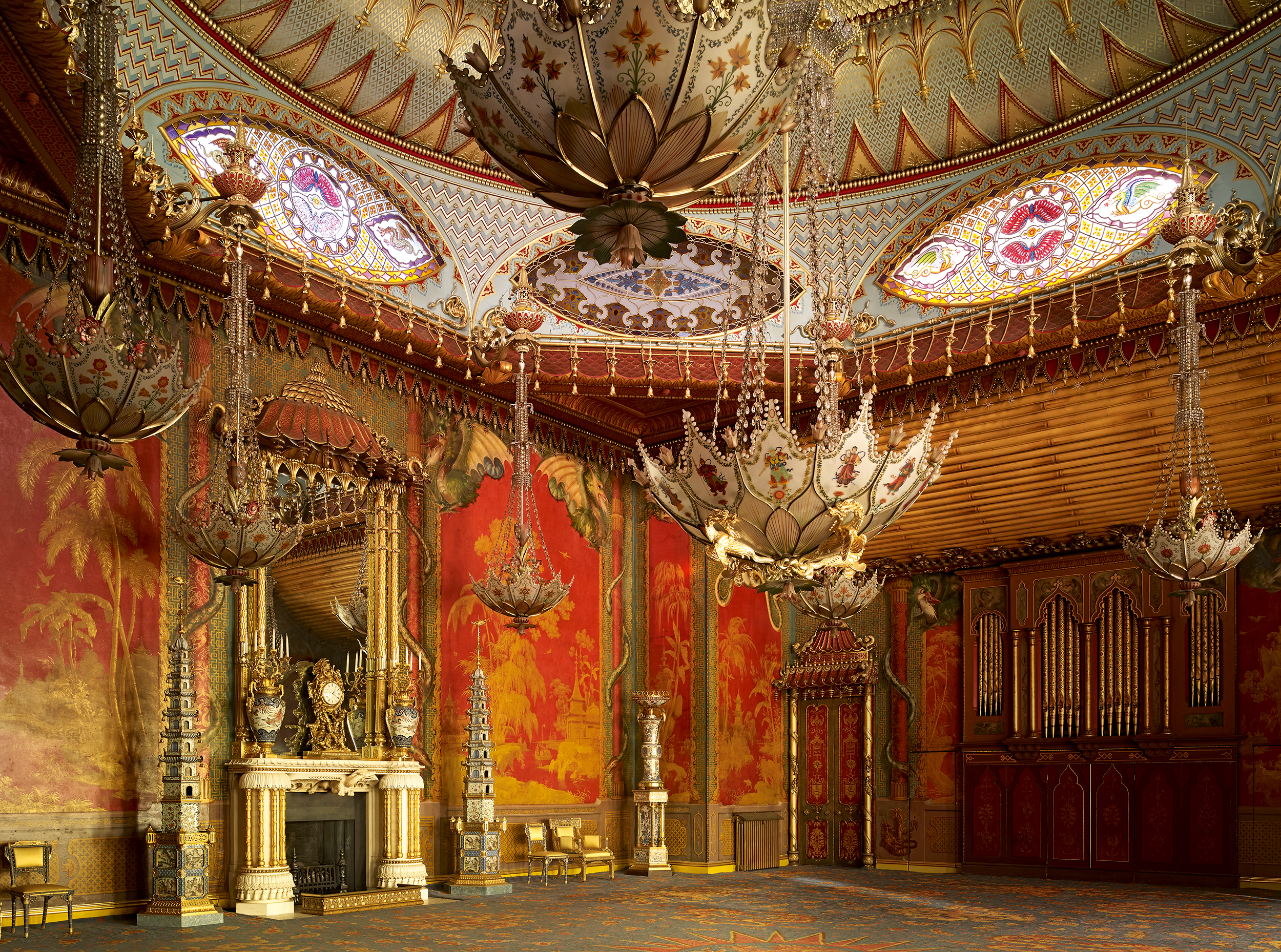
Why now is the best time since 1845 to enjoy the incredible interiors of Brighton Pavilion
John Goodall reports on the latest at Brighton Pavilion, detailing how an extraordinary loan from The Queen has made it
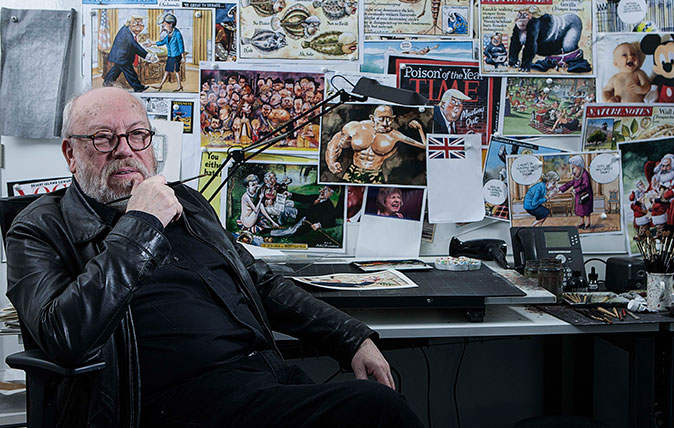
The political cartoonist: 'Politicians hate how I depict them, but they'd hate it even more if I ignored them'
Peter Brookes, political cartoonist at The Times, is a savage commentator and the spiritual successor to the likes of Gillray

Credit: Paul Roberts/Picfair
50 great things to do in Britain that won't cost you a penny
From moonlight to museums, birdsong to the Old Bailey, Kate Green and Giles Kime find 50 gloriously free things to

Credit: Alamy
The kitchen dresser, and why it's 'more important than central heating'
What is a country kitchen without a dresser overflowing with crockery, car keys and keepsakes? Flora Watkins explains all.
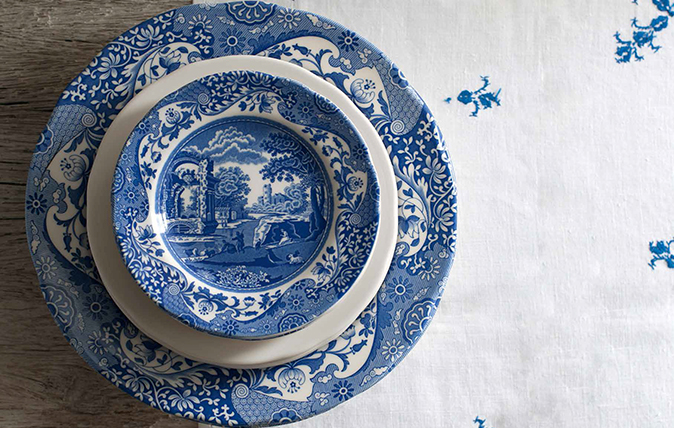
Spode celebrates 200th anniversary of iconic Blue Italian pattern
As Spode’s iconic Blue Italian pattern turns 200, Annunciata Walton looks back at its history, how it introduced bone china